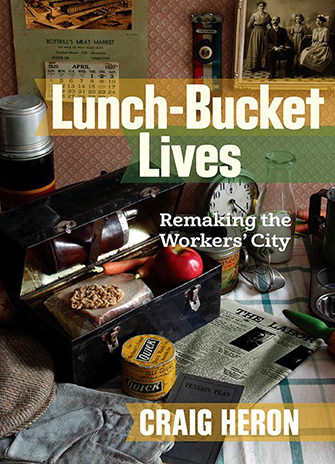York University history Professor Craig Heron has earned multiple awards for his 2015 book, Lunch-Bucket Lives: Remaking the Workers’ City, which explores the realities and struggles of the city of Hamilton’s working class.

In addition to receiving the designation of Book of the Year by the International Labor History Association earlier this year, Heron has won three more awards for his research on the significance of the working class in society, what kind of contribution they made and what their experience was.
Heron has been awarded the Clio Prize for Ontario by the Canadian Historical Association, as well as the Canadian Association for Work & Labour Studies 2015 Book of the Year award. He is also the recipient of the Fred Landon Award for local and regional history, given by the Ontario Historical Society.
The book also made the short list for both the Canadian Historical Association’s Sir John A. Macdonald Prize and the Ontario Speaker’s Book Award.
Heron pieced the life and times of Hamilton’s people together by meticulously combing through municipal, provincial and federal documents, personal testimonies, newspaper archives, oral history projects and records from unions, private societies and associations.
 “Lunch Bucket Lives is not only an impressive condensation of the last half century of social history, but a deeply respectful examination of the complex lives of Hamiltonians as the city became Steeltown,” reads a citation from the Clio Prize.
“Lunch Bucket Lives is not only an impressive condensation of the last half century of social history, but a deeply respectful examination of the complex lives of Hamiltonians as the city became Steeltown,” reads a citation from the Clio Prize.
Though Hamilton is a lesser known Canadian city on the global scale, Heron found that what can be learned from the city’s history can resonate internationally.
“A study of this factory town can address issues that resonate through many other communities in the industrialized world,” says Heron.
Hamilton, he says, has been a city much like many other industrial centres in other parts of Canada and in other countries. It has had a concentration of large-scale industries and a transnational work force drawn from the British Isles, Europe, North America and beyond. It was also exposed to many international trends in new management practices, new social policies, new labour ideologies and new forms of popular culture, including movies and radio.
Heron finds the issues faced by Hamilton’s working class in the past are still relevant today.
A statement from the Ontario Historical Society on the Landon Prize says the book is a “highly creative, meticulously researched study” that results in “a thoroughly engaging history of Hamilton (and region) during this period that effortlessly advances its arguments as it relates individual and collective experiences in the factory, on the city’s streets, and in the workers’ homes.”


